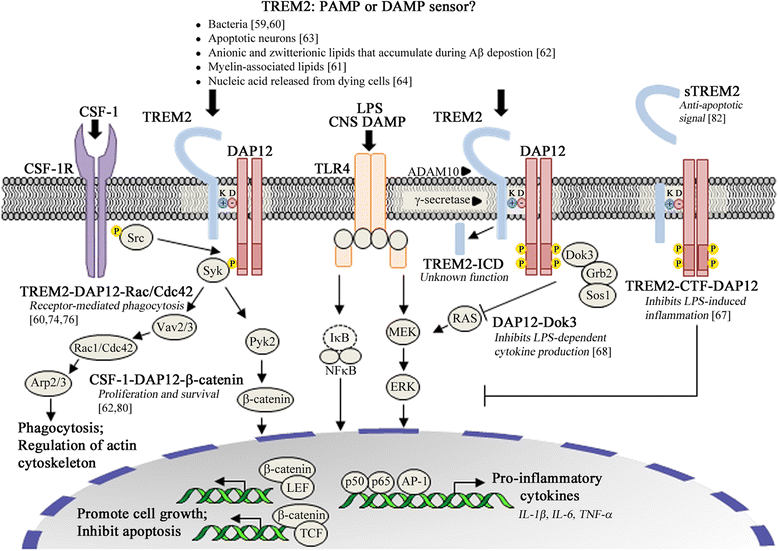TREM2 in CNS homeostasis and neurodegenerative disease
- PMID: 26337043
- PMCID: PMC4560063
- DOI: 10.1186/s13024-015-0040-9
TREM2 in CNS homeostasis and neurodegenerative disease
Abstract
Myeloid-lineage cells accomplish a myriad of homeostatic tasks including the recognition of pathogens, regulation of the inflammatory milieu, and mediation of tissue repair and regeneration. The innate immune receptor and its adaptor protein—triggering receptor expressed on myeloid cells 2 (TREM2) and DNAX-activating protein of 12 kDa (DAP12)—possess the ability to modulate critical cellular functions via crosstalk with diverse signaling pathways. As such, mutations in TREM2 and DAP12 have been found to be associated with a range of disease phenotypes. In particular, mutations in TREM2 increase the risk for Alzheimer's disease and other neurodegenerative disorders. The leading hypothesis is that microglia, the resident immune cells of the central nervous system, are the major myeloid cells affected by dysregulated TREM2-DAP12 function. Here, we review how impaired signaling by the TREM2-DAP12 pathway leads to altered immune responses in phagocytosis, cytokine production, and microglial proliferation and survival, thus contributing to disease pathogenesis.
Figures

References
-
- Rice GI, Forte GM, Szynkiewicz M, Chase DS, Aeby A, Abdel-Hamid MS, et al. Assessment of interferon-related biomarkers in Aicardi-Goutieres syndrome associated with mutations in TREX1, RNASEH2A, RNASEH2B, RNASEH2C, SAMHD1, and ADAR: a case–control study. Lancet Neurol. 2013;12(12):1159–69. doi: 10.1016/S1474-4422(13)70258-8. - DOI - PMC - PubMed
Publication types
MeSH terms
Substances
Grants and funding
LinkOut - more resources
Full Text Sources
Other Literature Sources
Medical
Research Materials

